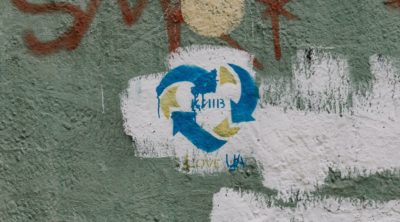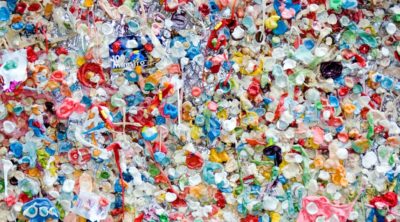
Lake Karachay has been declared the most polluted place on Earth. But what are the actual reasons that have caused this pollution in Lake Karachay?
Did You Know?
Lake Karachay features in ‘The Last Oracle’, which is the fifth novel in James Rollins’ Sigma Force series.
The Chernobyl disaster was a nuclear catastrophe that shocked the world. However, grim as it was, it may not have been the worst of the Soviet Union’s nuclear follies.
Unfortunately, that title must go to Lake Karachay, a water body that was so extensively polluted with nuclear waste, that back in 1990, scientists found that spending just an hour on its banks would be enough to fill the human body with a fatal dose of radiation
In the following lines, we shall peek back into history, and learn about the chain of events that made this serene lake so very harmful.

The Mayak Reactor
The U.S. bombings of Hiroshima and Nagasaki had tipped the atomic scales, and Russia was now in a mad race to catch up with the nuclear superiority of America. In the 1940s, immediately following World War 2, the Soviet Union established a secret city called Chelyabinsk-40 in the Southern Urals, with the purpose of mining uranium-238 from the surrounding hills.
Between 1945 and 1948, Russia promptly built the Mayak reactor in this region, to convert uranium to weapons-grade plutonium, which could be shipped off to bomb-builder sites. This project was assigned the highest level of priority, and little to no consideration was given to the safety of plant workers, or to the effects that the dumping of nuclear waste would have on the surrounding environment.
Massive quantities of nuclear waste produced by the plant was dumped into the close-by Techa River via the adjacent Kyzyltash Lake. The Techa river provided water to nearly 39 towns and villages further downstream from the Mayak plant.
The existence of the Mayak reactor was kept a secret by the Soviet Union until 1990. It was only when Russian president Boris Yeltsin signed a decree in 1992, opening the area for Western scientists, that the effects of Mayak on its surroundings could be ascertained.
Why is Lake Karachay so Polluted?
The Mayak reactor continued dumping nuclear waste into the Techa River, thus poisoning the people who resided downstream. Finally, almost three years later, the Soviet Union decided to send scientists to the site to verify if the radioactivity in the area was under control or not.
The typical (normal) background gamma radiation in the region was 0.21 Röntgens per year. However, when these scientists tested the water of the Techa, they discovered that it was emitting a deadly dose of 5 Röntgens per hour! Russian authorities promptly dammed-up the Techa, and relocated thousands of villages downstream from it. They also decided to find a new location for dumping nuclear waste, and Lake Karachay was chosen as the ideal candidate.
Karachay was located very close to the reactor. It was fed by a single river, and didn’t have any surface outlets. Thus, it was reasoned that it could quite easily trap the nuclear waste and prevent it from spreading to the surrounding regions.
For almost 40 years, Lake Karachay served as the primary waste reservoir for the Mayak reactor. The Soviet Union didn’t even acknowledge the existence of this dumping ground, until 1990.
Spread of Contamination
At the peak of its operations, the Mayak reactor was putting out more than 200,000 times the normally accepted limits of radioactive waste into this lake, contaminating it to extremely dangerous levels. Testing has revealed that, even though there were no surface outlets visible, the lake’s contaminated water was actually seeping through into the groundwater and entering the surrounding Asanov swamp.
Further, in 1967, a major drought in the region caused the lake to dry up, exposing the radioactive sediment in its basin. These were subsequently carried by winds and distributed across an area of nearly 900 square miles, where an estimated half a million people lived.
Health Effects
The operations of the Mayak reactor were a closely guarded secret for decades. By the time the Soviet Union finally acknowledged its existence, the Chelyabinsk region had seen a 21 per cent increase in cancer, a 25 per cent increase in birth defects, and a 41 per cent increase in leukemia.
Close to 65% of the residents of the villages that relied on the Techa river came to be stricken by radiation sickness. However, doctors were instructed not to mention radiation in their diagnosis, and instead resorted to calling it ‘special disease’.
Current Status
The dumping of nuclear waste into the Techa had already contributed to the spread of radioactive contamination. This problem was further aggravated by the leakage of radioactive water via groundwater runoffs, coupled with a blast in 1957, and the 1967 drought. As a result, large areas of Chelyabinsk presently remain uninhabitable.
Various surveys carried out over the years have estimated that, around a billion gallons of groundwater has been polluted, with close to 5 megacuries of radionuclides which are believed to have entered into the bodies of the local populace via home-grown foods.
As for the actual lake itself, Karachay presently emits nearly 600 Röntgens per hour. This is more than sufficient to kill a human being. The area is highly unstable, and if any of the dams break, the radioactive water from the Techa River could pour into the Asanov swamp. It would then enter the Ob’ River, and flow into the Arctic Sea, where currents would carry an estimated 120 million Curies of radioactivity into the Atlantic.
From 1978, the Russian government has been working on the cleaning of this lake. From 1978 to 1986, Lake Karachay was filled with almost 10,000 hollow concrete blocks to prevent its sediments from shifting. In 2003, the Mayak plant’s operating license for discharging waste into open water was revoked.



